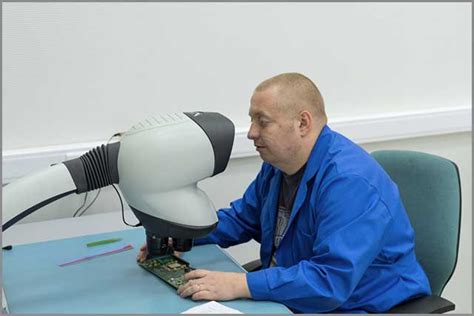What is ENIG?
Electroless Nickel Immersion Gold (ENIG) is a surface finish technology widely used in the production of printed circuit boards (PCBs). This process involves depositing a thin layer of nickel followed by a thin layer of gold on the copper pads of the PCB. ENIG provides excellent solderability, flatness, and corrosion resistance, making it an ideal choice for various applications, including high-frequency and high-reliability devices.
Advantages of ENIG
- Excellent solderability
- Flat surface finish
- Good corrosion resistance
- Suitable for high-frequency applications
- Compatibility with fine-pitch components
- Long shelf life
The ENIG Process
The ENIG process consists of several steps that ensure a high-quality surface finish:
-
Cleaning: The PCB is thoroughly cleaned to remove any contaminants or oxides from the copper surface.
-
Microetching: A mild etching solution is applied to the copper surface to improve adhesion of the subsequent layers.
-
Activation: The copper surface is activated using a palladium-based solution to promote the deposition of the nickel layer.
-
Electroless Nickel Plating: A thin layer of nickel (typically 3-6 µm) is deposited on the activated copper surface through an autocatalytic chemical reaction.
-
Immersion Gold Plating: A thin layer of gold (typically 0.05-0.2 µm) is deposited on the nickel surface through an immersion process, which replaces the top layer of nickel atoms with gold atoms.
-
Inspection: The finished PCB is inspected for quality and adherence to specifications.
ENIG Process Parameters
| Parameter | Value |
|---|---|
| Nickel Thickness | 3-6 µm |
| Gold Thickness | 0.05-0.2 µm |
| Nickel Phosphorus Content | 7-11% |
| Nickel Hardness | 500-700 HV |
| Gold Purity | 99.9% |

ENIG vs. Other Surface Finishes
ENIG is one of several surface finish options available for PCBs. Here’s a comparison of ENIG with other popular surface finishes:
ENIG vs. HASL (Hot Air Solder Leveling)
- ENIG provides a flatter surface finish compared to HASL, making it more suitable for fine-pitch components.
- ENIG has a longer shelf life and better corrosion resistance than HASL.
- HASL is more cost-effective than ENIG for less demanding applications.
ENIG vs. OSP (Organic Solderability Preservative)
- ENIG offers better solderability and longer shelf life compared to OSP.
- OSP is more environmentally friendly and cost-effective than ENIG.
- ENIG is more suitable for high-reliability applications, while OSP is often used for consumer electronics.
ENIG vs. Immersion Silver
- ENIG provides better solderability and longer shelf life than immersion silver.
- Immersion silver is more cost-effective than ENIG.
- ENIG is more suitable for high-frequency applications due to its lower insertion loss.

Applications of ENIG
ENIG is widely used in various industries and applications, including:
- High-frequency devices (e.g., RF and microwave circuits)
- Automotive electronics
- Medical devices
- Aerospace and defense systems
- Industrial control systems
- Consumer electronics

Challenges and Considerations
While ENIG offers numerous advantages, there are some challenges and considerations to keep in mind:
-
Cost: ENIG is more expensive than some other surface finishes, such as HASL and OSP, due to the use of gold and the multi-step process involved.
-
Black Pad: In some cases, an issue known as “black pad” can occur, where the nickel layer becomes overly porous and brittle, leading to poor solderability. This can be mitigated by proper process control and the use of high-quality chemicals.
-
Trace Plating: ENIG may not be suitable for applications requiring trace plating, as the nickel and gold layers can build up on the sides of the traces, affecting impedance and signal integrity.
RAYPCB’s ENIG Capabilities
RAYPCB is a leading PCB manufacturer that offers high-quality ENIG surface finish services. Our state-of-the-art facilities and experienced team ensure that your PCBs meet the highest standards of quality and reliability.
- Strict process control to ensure consistent results
- Capability to handle a wide range of PCB Sizes and complexities
- Quick turnaround times
- Competitive pricing
- Excellent customer support
Frequently Asked Questions (FAQ)
- What is the typical thickness of the nickel and gold layers in ENIG?
-
The typical thickness of the nickel layer in ENIG is 3-6 µm, while the gold layer is typically 0.05-0.2 µm thick.
-
How does ENIG compare to HASL in terms of cost?
-
ENIG is generally more expensive than HASL due to the use of gold and the multi-step process involved. However, ENIG offers superior flatness, solderability, and corrosion resistance, making it a better choice for high-reliability applications.
-
Can ENIG be used for high-frequency applications?
-
Yes, ENIG is an excellent choice for high-frequency applications, such as RF and microwave circuits, due to its low insertion loss and good signal integrity properties.
-
What is “black pad,” and how can it be prevented?
-
“Black pad” is an issue that can occur in ENIG, where the nickel layer becomes overly porous and brittle, leading to poor solderability. This can be prevented by proper process control, the use of high-quality chemicals, and regular monitoring of the plating process.
-
How long is the shelf life of ENIG-finished PCBs?
- ENIG-finished PCBs have a long shelf life, typically up to 12 months or more when stored properly in a cool, dry environment. This makes ENIG a good choice for applications where PCBs may need to be stored for extended periods before assembly.
Conclusion
Electroless Nickel Immersion Gold (ENIG) is a versatile and reliable surface finish technology that offers numerous advantages for PCB manufacturing. Its excellent solderability, flatness, and corrosion resistance make it an ideal choice for a wide range of applications, from high-frequency devices to automotive electronics and medical devices.
RAYPCB is committed to providing high-quality ENIG services to our customers, backed by our state-of-the-art facilities, experienced team, and strict process control. With our competitive pricing and quick turnaround times, we are your trusted partner for all your PCB surface finish needs.

Leave a Reply